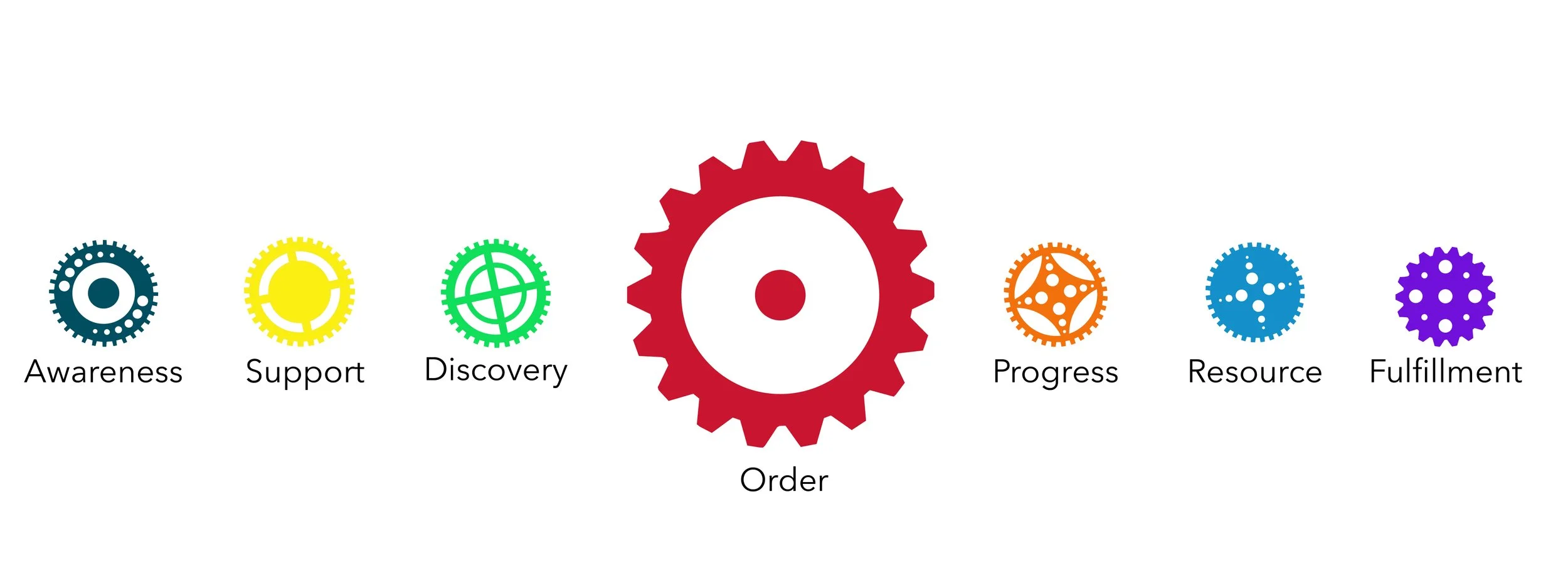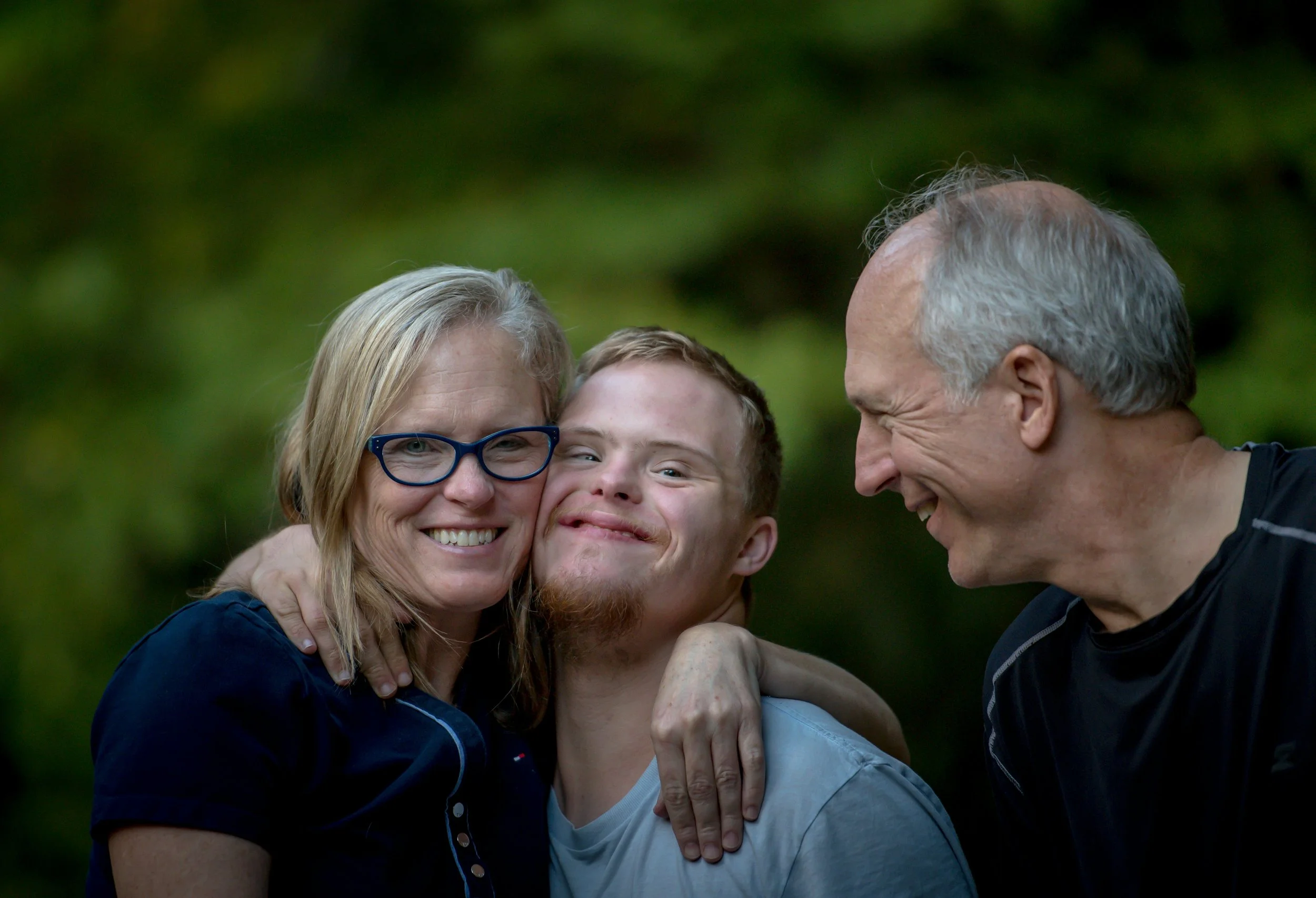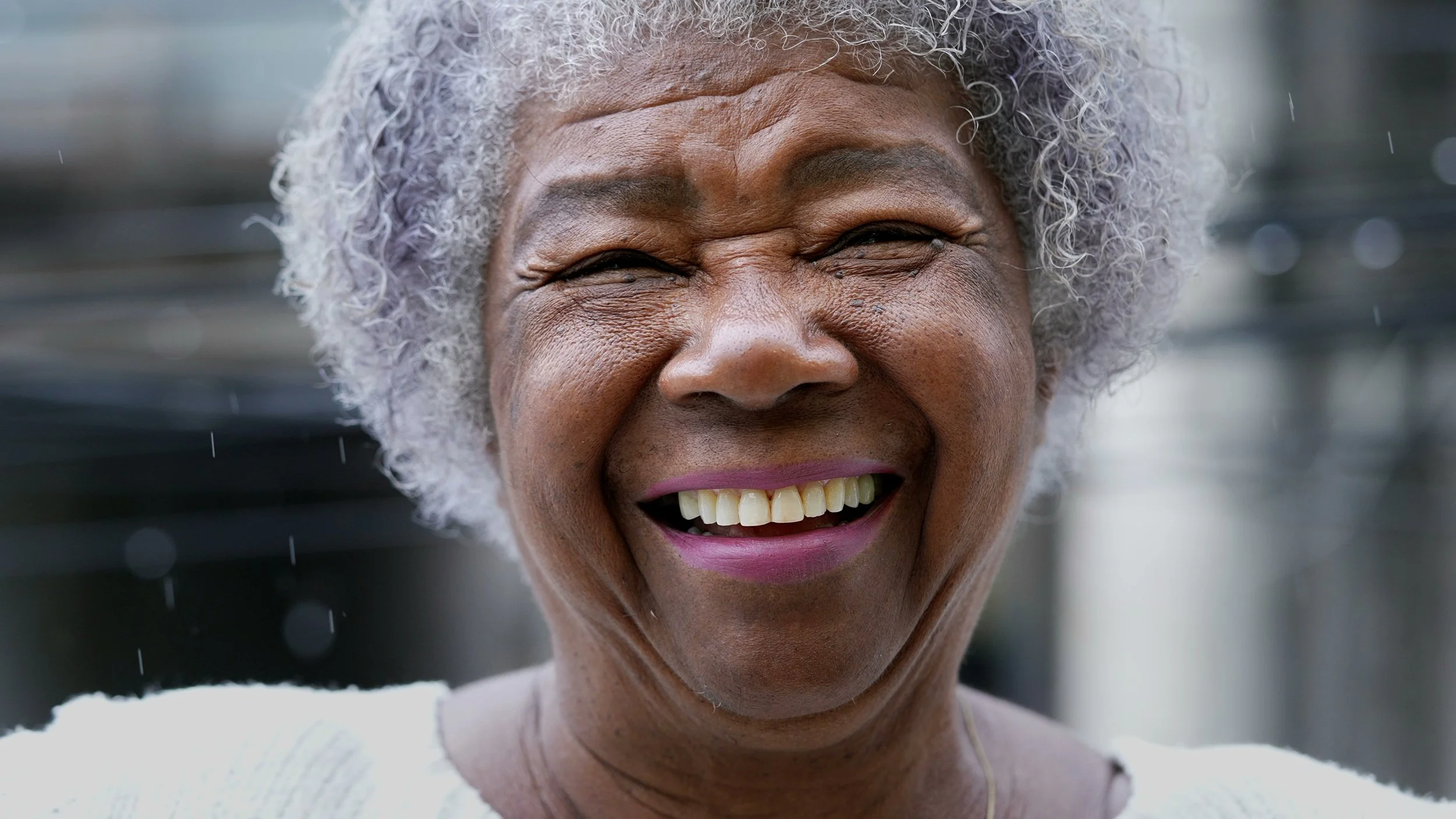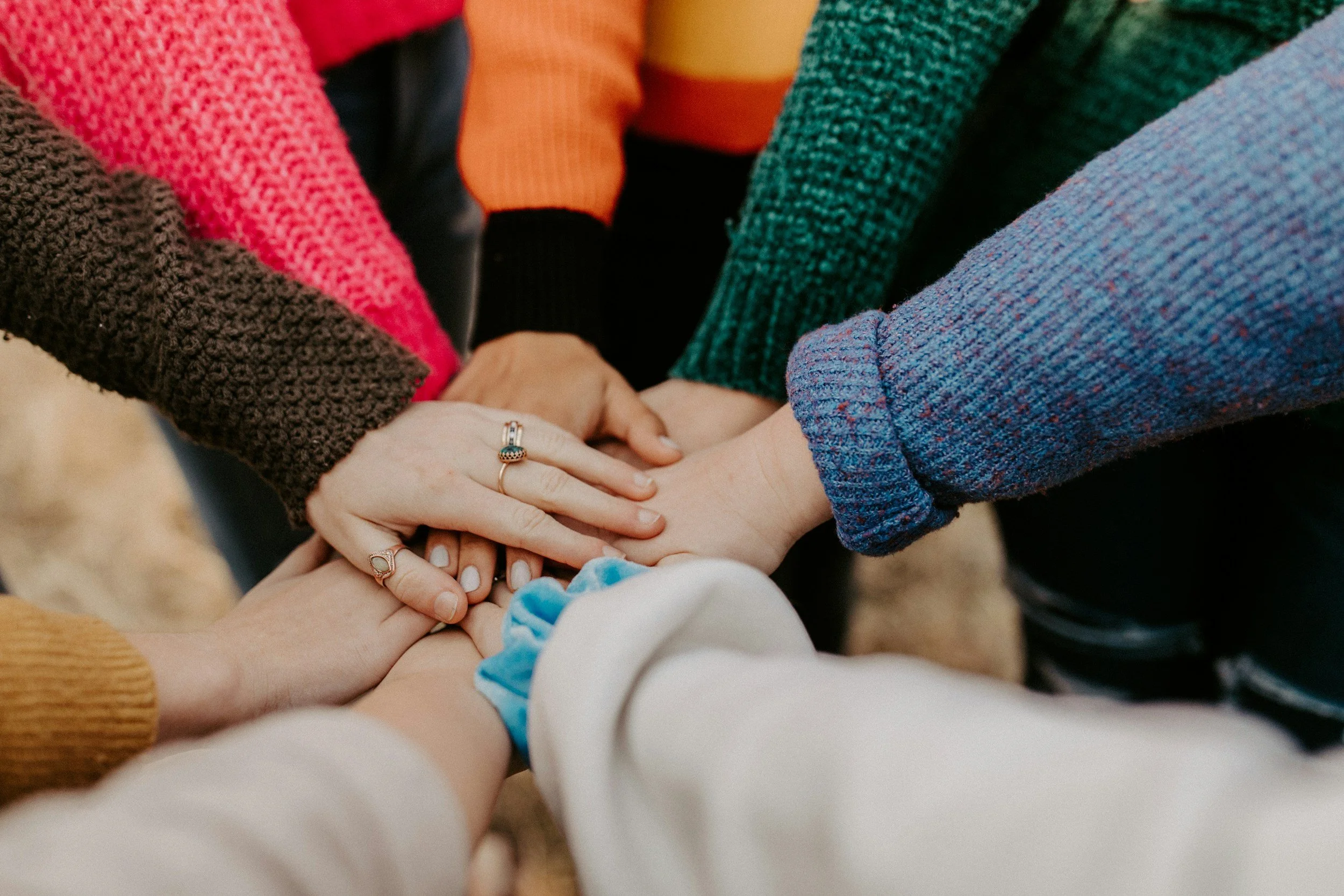
SYNERGISTIC DESIGN
WHAT DRIVES YOU?
Order
READ ALONG | JUST LISTEN
Synergistic designs are driven by the motivational drive of Order. Order is the drive that seeks to establish harmony, structure, and a well-functioning arrangement within any environment. It is motivated by the desire to bring clarity, consistency, and purpose to situations, ensuring that every part of a system works together effectively. Order operates by organizing elements in a way that allows them to interact seamlessly, creating an environment that minimizes chaos and fosters cohesion.
For individuals with a synergistic design, the Order drive leads them to see every group, project, or organization as an interconnected system where each part plays a unique role. At work in the synergistic design, Order enables these individuals to align people, processes, and resources in a way that maximizes harmony and balance. They are fulfilled by creating spaces where collaboration flows smoothly, and where each component supports and enhances the others, achieving a sense of unified purpose.
-
In a synergistic design, the Order drive shapes the way individuals approach any system or environment. They view every setting—whether a team, project, or organization—as an interconnected whole where each part has its unique role but ultimately contributes to a seamless flow. For them, Order provides the blueprint for creating functional, harmonious systems that bring out the best in every component.
-
Synergistic individuals, guided by Order, prioritize structure as the foundation for effective collaboration. They understand that for anything to function optimally, each element must have a defined place and purpose. This drive for structure and precision ensures that resources are organized, roles are clear, and processes are predictable. By building environments with careful attention to structure, they create a space where everyone can rely on stability, freeing individuals to contribute their best within a well-defined framework.
-
Order-driven synergists are motivated by precision and predictability because these qualities reinforce cohesion and flow. Predictability provides a sense of security, and precision ensures that each part of the system works without unnecessary friction. This preference helps them establish routines and standards that everyone can trust, allowing them to create a strong foundation on which synergy can thrive. Predictable processes allow individuals to focus on their contributions, knowing that their efforts will align with the greater whole.
-
The Order drive in synergistic designs places a high value on collaboration and connection. They believe that when people work together in a well-organized way, their combined efforts produce results far greater than what each could achieve alone. For them, synergy emerges from creating a culture where collaboration is supported by clear systems and open channels of communication. Order-driven synergists see themselves as facilitators, aligning resources and relationships to create a supportive environment where everyone’s strengths are fully utilized.
-
Those with a synergistic design are not content with simple order; they aim to create systems where each part enhances the other. To them, synergy is achieved when the whole system operates fluidly, with each component contributing to a unified purpose. Order allows them to build these systems with careful attention to how each element interrelates, making them skilled at designing processes that promote continuous flow and eliminate bottlenecks. Their fulfillment comes from watching these systems come to life, knowing that each part has a meaningful role in the success of the whole.
-
For synergistic designs, fulfillment lies in witnessing harmony—when a team, process, or environment is working together as one cohesive unit. This sense of harmony brings them deep satisfaction, as it aligns perfectly with their drive for Order. They are motivated by the peace and satisfaction that comes from knowing that every part of the system is doing its job, contributing to a balanced and effective whole. To them, a well-ordered, harmonious environment is the ultimate achievement, as it reflects the fulfillment of their core purpose.
-
The Order drive in synergistic designs also instills a commitment to long-term stability and sustainable growth. Synergistic individuals understand that stability is essential for maintaining harmony over time. They approach projects and systems with a focus on sustainability, ensuring that what they create will continue to function and grow as needs evolve. This long-term perspective means they’re often strategic thinkers who plan for the future, valuing practices that will support continuity and resilience within the systems they build.
-
In synergistic designs, the Order drive fosters a balance between independence and interdependence. They recognize that each part of the system, while unique, is most effective when working in tandem with others. Their design is about creating environments where individuals can excel in their roles while being part of a cohesive team. This balance allows each person to feel valued for their unique contributions while understanding how their role fits into the larger picture, reinforcing a sense of unity and shared purpose.
Synergistic Designs are about bringing people and processes together in a way that creates flow, cohesion, and a shared sense of purpose. The Order drive equips these individuals with the ability to see beyond isolated parts, envisioning a greater whole where everything works in concert. Through structure, precision, collaboration, and sustainability, they craft environments where synergy flourishes, creating systems that stand the test of time and bring fulfillment through unity and harmony.
12 ELEMENTS OF ORDER
Motivational drives are profoundly shaped by the fulfillment of core psychological needs, and these needs are nurtured by specific conditions that foster intrinsic motivation. Each of the 12 key areas—autonomy, competency, relatedness, purpose, curiosity, enjoyment, challenge, self-determination, internal rewards, growth mindset, novelty, and feedback—interacts with motivational drives in a unique way. By satisfying these needs, they act as catalysts for energizing motivation. Here's an insightful breakdown of how each area connects to our intrinsic drives, fueling our actions and goals.
-
Concept: Your sense of order is enhanced when you have control over organizing your environment and processes. The freedom to structure your own systems and methods increases your intrinsic motivation.
Application: Develop your own organizational strategies and systems, giving yourself the autonomy to decide how to arrange and manage your tasks. This control will boost your motivation and help you create a more efficient and personalized workflow.
-
Concept: Your innate desire to learn and explore new methods of organization drives your motivation for order. Curiosity keeps you engaged and motivated to find innovative solutions.
Application: Promote a culture of continuous improvement by actively learning about new organizational techniques and tools. This approach will keep your curiosity alive and help you discover more effective ways to maintain order.
-
Concept: Personal satisfaction and fulfillment from achieving order and maintaining well-functioning systems are powerful motivators. Internal rewards like a sense of harmony, efficiency, and accomplishment drive your intrinsic motivation.
Application: Reflect on your personal achievements, recognize the value of your organizational efforts, and acknowledge the order and efficiency you’ve created. This reflection will reinforce your motivation and encourage continued success in maintaining order.
-
Concept: Feeling effective and capable in creating and maintaining order boosts your intrinsic motivation. Mastery of organizational skills and seeing the tangible results of your efforts enhance your sense of competence.
Application: Engage in opportunities for skill development in organization, project management, and system design. This will help you refine your abilities and increase your motivation as you see the positive impact of your efforts.
-
Concept: Genuine pleasure and satisfaction from creating and maintaining order are central to your drive. Enjoyment fuels your desire to continue organizing and improving systems.
Application: Create an environment where the process of organizing is both enjoyable and rewarding. Celebrate successful organization and system implementation to reinforce your motivation and keep the process fulfilling.
-
Concept: Belief in your ability to grow and improve your organizational skills through effort and learning aligns with a growth mindset. This belief encourages persistence and resilience when facing organizational challenges.
Application: Foster an environment that views organizational challenges as opportunities for growth and learning. Embrace these challenges as chances to develop resilience and adaptability, which will strengthen your organizational skills over time.
-
Concept: Positive relationships and a sense of community with others who value order and organization boost your motivation. Collaborating with others to achieve a well-ordered environment fosters a sense of belonging.
Application: Encourage teamwork in organizing projects, creating systems, and maintaining order within a group or organization. Working together with others who share your values will strengthen your sense of belonging and motivation.
-
Concept: Tackling difficult but attainable organizational tasks gives you a sense of achievement. Challenges that stretch your abilities without being overwhelming enhance your motivation.
Application: Set challenging yet achievable organizational goals and tasks that push you to refine your systems and processes. This approach will help you grow and stay motivated to improve and maintain order.
-
Concept: Exposure to new and varied organizational tools, techniques, and systems keeps the process of creating order fresh and engaging. Novelty prevents boredom and sustains your interest.
Application: Regularly introduce new organizational methodologies, tools, and systems to keep your journey of achieving order dynamic and exciting. This variety will help maintain your motivation and enthusiasm for organizing.
-
Concept: Seeing your organizational efforts as meaningful and contributing to a greater cause increases your motivation. Aligning your organizational tasks with personal and collective goals gives you a strong sense of purpose.
Application: Emphasize the impact of your organizational skills on achieving overall goals and improving the efficiency of your team or organization. Recognizing this contribution will deepen your sense of purpose and drive to maintain order.
-
Concept: Your perception of being in control of your organizational decisions is essential. Feeling autonomous in your organizing efforts strengthens your motivation.
Application: Encourage yourself to take on self-initiated organization projects and give yourself the freedom to design and implement systems as you see fit. This autonomy will enhance your motivation and satisfaction in creating order.
-
Concept: Constructive feedback on your organizational efforts helps you understand your progress and identify areas for improvement. Positive feedback enhances your feelings of competence and motivation.
Application: Seek regular, constructive feedback on your organizational projects, celebrate milestones, and use tracking tools to visualize your progress in maintaining order. This approach will boost your confidence and motivation to keep refining your organizational skills.
UNDERSTANDING PACE + FLOW
Pace and flow play important roles in how we engage with our motivational drives.
-
Pace relates to the speed at which we prefer to approach tasks and goals. People with different motivational drives may naturally gravitate towards faster or slower paces. For example, those driven by Progress might thrive with a quicker pace, seeking to achieve goals swiftly, while those driven by Discovery may prefer a more deliberate pace, allowing time for exploration and deep understanding.
-
Flow refers to a state of being fully absorbed in an activity where challenges align with your skill level, creating a sense of effortless engagement. Achieving flow can be highly motivating, especially when it aligns with a person’s intrinsic drive. For instance, someone with a Fulfillment drive may experience flow when engaging in joyful or creative activities, while someone with a Resource drive may find flow in efficiently managing assets or organizing resources.
Both pace and flow help tailor how we interact with our motivations, keeping us engaged and energized by aligning tasks with our natural preferences and strengths.
THE PACE AND FLOW OF THE ORDER DRIVE
Overall Pace:
The overall pace of someone driven by Order is deliberate and controlled, prioritizing consistency, predictability, and precision. They move at a pace that allows for careful planning and execution, ensuring that everything is in its place and functioning as intended.
Flow:
The flow for those driven by Order is systematic and structured, with a strong focus on organization and efficiency. They are most in their element when they can implement and manage systems that bring clarity and order to complex situations. Their flow involves a continuous process of organizing, refining, and optimizing, ensuring that everything runs smoothly and harmoniously.
Pace Increase and Activation:
Pace Increase: The pace of an Order-driven individual increases when they are engaged in tasks that involve establishing or refining systems, optimizing processes, or bringing order to disorganized situations. The clarity of purpose and the satisfaction of creating efficiency can lead to a more rapid and focused pace.
Activation: Key activators include opportunities to organize and streamline operations, environments that value precision and clarity, and projects that require meticulous planning and execution. The presence of clear goals, well-defined roles, and the challenge of bringing harmony and efficiency to complex tasks can significantly enhance their flow and increase their pace.
For individuals driven by Order, their pace and flow are characterized by structure, consistency, and a focus on organization and harmony. Specific elements can activate their flow and increase their pace, aligning with their natural drive to create and maintain order. Here’s how this unfolds:
-
Pace: Individuals with an Order drive often move at a deliberate and organized pace. They take the time to ensure that everything is properly structured and in its rightful place before proceeding. Their pace is steady, reflecting a desire to create order out of chaos and ensure that every element fits within a well-defined system.
Flow: Their flow is highly structured, with a clear sequence of steps that are meticulously planned and executed. They thrive in environments where they can establish routines, create systems, and organize processes.
Pace Increase: Their pace can increase when they are in the process of setting up or refining systems that enhance efficiency or organization. The excitement of bringing order to a chaotic situation can spur them to move more quickly as they work to establish structure.
Activation: Being given the responsibility to organize, systematize, or streamline operations can activate their flow. Clear goals, well-defined roles, and environments that value precision and clarity also enhance their pace and engagement.
-
Pace: The pace of those driven by Order is methodical, focusing on maintaining and enhancing structure. They prefer a measured approach that allows them to assess and refine systems continuously, ensuring that all components function cohesively within the larger framework.
Flow: Their flow revolves around creating and maintaining a coherent structure, excelling in situations that require coordination, planning, and the integration of various elements. Their flow is systematic, ensuring that all parts work together harmoniously.
Pace Increase: When they have a clear plan or strategy in place, their pace increases as they work to implement it efficiently. Deadlines or time-sensitive projects that require quick and precise execution can also spur them into faster action.
Activation: Structured environments with clear expectations, timelines, and objectives are key activators. Projects that require detailed planning, coordination, and the successful integration of complex components also enhance their pace and focus.
-
Pace: Progress for those driven by Order is marked by a smooth, consistent pace that seeks to balance efficiency with harmony. They aim to optimize processes so that they run seamlessly, without unnecessary interruptions or conflicts.
Flow: Their flow is continuous and harmonious, with an emphasis on creating environments where everything works together efficiently. They excel at optimizing systems and processes, ensuring that operations are as smooth and efficient as possible.
Pace Increase: Their pace accelerates when they are fine-tuning systems or resolving inefficiencies. The satisfaction of achieving a state of harmony and operational efficiency motivates them to work quickly and effectively.
Activation: Opportunities to improve processes, resolve conflicts, or streamline operations are strong activators. Environments that require maintaining high standards of order, efficiency, and collaboration also activate their flow and can lead to an increase in pace.
For individuals driven by Order, certain factors can activate their flow and increase their pace, aligning with their natural inclination toward organization, structure, and creating harmony within systems. Here are some key triggers:
-
Activation: Situations where they can design, implement, or refine systems and processes strongly activate Order-driven individuals. They are motivated by the chance to bring organization and efficiency to chaotic or underperforming areas.
Pace Increase: When they see a clear opportunity to create order out of disorder, their pace increases as they work energetically to establish or enhance systems that ensure smooth operation.
-
Activation: Complex situations that lack clear structure or where multiple elements need to be coordinated activate their drive. They are motivated by the challenge of bringing clarity and order to intricate or disorganized scenarios.
Pace Increase: The urgency to impose structure on a complicated situation can lead to a faster pace as they work to organize, systematize, and ensure all components function harmoniously.
-
Activation: When there are significant stakes involved in ensuring that systems or processes run smoothly—such as during large projects or critical operations—Order-driven individuals are highly engaged. The pressure to maintain order under these conditions heightens their sense of responsibility.
Pace Increase: The importance of preventing disorder or inefficiency in high-stakes situations can significantly increase their pace as they focus on maintaining or restoring order quickly.
-
Activation: Situations where they can bring teams together, align their efforts, and ensure everyone is working cohesively towards a common goal strongly engage Order-driven individuals. They thrive on creating synergy and ensuring that collaboration is well-coordinated.
Pace Increase: The need to align and coordinate multiple elements or people in a project can drive them to work more rapidly, especially if time-sensitive coordination is crucial to success.
-
Activation: The opportunity to develop and implement long-term plans or strategies that improve organizational efficiency and effectiveness activates their strategic thinking. They are motivated by the chance to create lasting order and stability.
Pace Increase: Their pace increases when they are working on long-term plans that require timely implementation, particularly when the success of these plans depends on precise and efficient execution.
-
Activation: When conflicts arise or disruptions threaten the smooth functioning of systems, Order-driven individuals are highly activated. They are motivated by the need to restore harmony and ensure that everything is operating as it should.
Pace Increase: The urgency to resolve conflicts or address disruptions quickly can lead to an accelerated pace as they work to restore order and prevent further complications.
-
Activation: Being recognized for their ability to organize, systematize, and maintain efficiency activates their drive. Knowing that their efforts are valued encourages them to continue refining and perfecting systems.
Pace Increase: Positive feedback and acknowledgment of their organizational abilities can prompt them to work even more efficiently, increasing their pace as they strive to maintain high standards of order and efficiency.
-
Activation: Opportunities to streamline operations, reduce inefficiencies, and optimize processes strongly engage Order-driven individuals. They are motivated by the potential to make systems more effective and less prone to errors or delays.
Pace Increase: The prospect of making significant improvements to how things are done can lead to a quicker pace as they eagerly work to implement changes that bring greater order and efficiency.

READ ALONG | JUST LISTEN
Your pace is steady, methodical, and intentional. You approach tasks with a desire to establish rhythm and consistency, ensuring that each action fits seamlessly into a larger plan. You’re not one to rush; you prefer to take the time needed to arrange all elements properly so that they work together efficiently. Your rest comes from moments when everything is in its place, and the systems you’ve set up are running smoothly. This sense of harmony allows you to relax, knowing that things are functioning as they should.
In each of these examples, the dynamic pace is a tool they use intentionally for specific periods, while the slower, steady pace provides a grounding rhythm that sustains their fulfillment. This balance enables them to pursue goals and create harmony in various areas of life, all while staying aligned with their intrinsic need for structure and consistency.
click + expand
-
Dynamic Pace: Occasionally, when deadlines approach or unexpected issues arise, they might move into a focused, dynamic pace, prioritizing key tasks and coordinating closely with others to ensure the project stays on track. This heightened energy is intentional and aimed at reinforcing the system’s success.
Steady, Slower Pace: Once the project is in a stable phase, they return to a slower, methodical pace, focusing on refining details, reviewing progress, and ensuring all components align smoothly. This steady rhythm allows them to keep the project running efficiently without the need for constant adjustments.
-
Dynamic Pace: During times like seasonal cleaning or preparing for guests, they may take on a faster, dynamic pace, working quickly to reorganize, deep clean, or make needed changes to the household setup. This burst of activity is energizing and aligns with their love for creating a harmonious environment.
Steady, Slower Pace: On regular days, they maintain a slower, steady pace, following established routines like daily tidying, meal planning, or organizing spaces. This steady rhythm ensures a sense of calm and order, allowing them to enjoy their environment without feeling rushed.
-
Dynamic Pace: For special occasions, like hosting a party or celebrating milestones, they embrace a more dynamic pace, arranging details, coordinating with others, and preparing everything to make the event memorable. This intentional increase in pace energizes them, as it contributes to meaningful, well-organized social experiences.
Steady, Slower Pace: In day-to-day relationships, they prefer a slower, steady rhythm, such as weekly family dinners or regular check-ins with friends. These slower, consistent interactions foster deep, harmonious connections, allowing relationships to grow naturally over time.
-
Dynamic Pace: When they have a specific wellness goal—like preparing for a fitness milestone or engaging in a focused self-care challenge—they adopt a dynamic, disciplined pace. This includes more intense workouts, focused meal plans, or additional self-care activities that provide a refreshing boost to their routine.
Steady, Slower Pace: Outside of specific goals, they maintain a slower, steady pace, following a balanced daily wellness routine. Activities like morning meditation, light exercise, or journaling provide ongoing growth and relaxation without feeling hurried, helping them sustain a harmonious state of well-being.
-
Dynamic Pace: During times of significant financial planning—such as budgeting for a big purchase, managing investments, or preparing for tax season—they may adopt a more dynamic, focused pace. This could involve researching options, setting up new accounts, or making timely decisions to ensure financial security. This focused energy is intentional, aimed at maintaining long-term stability.
Steady, Slower Pace: In their regular financial routines, they prefer a slower, methodical approach, checking accounts periodically, saving consistently, and reviewing expenses. This steady rhythm allows them to manage their resources thoughtfully, creating a sense of security and peace in their financial life.
-
Dynamic Pace: When organizing or participating in a community event—such as a fundraiser, workshop, or special gathering—they may step into a dynamic pace, coordinating details, setting up schedules, and collaborating with others to ensure everything runs smoothly. This heightened involvement brings fulfillment through active contribution to the community.
Steady, Slower Pace: On a regular basis, they maintain a slower, consistent level of engagement, such as attending monthly meetings or offering support to others in a structured way. This steady pace allows them to be a reliable presence, helping them stay connected and contribute meaningfully without feeling overextended.
ORDER IN THE WORKPLACE
In the workplace, order is essential for achieving efficiency and productivity. For instance, consider a well-organized project team. Each team member has a specific role and set of responsibilities that complement the roles of others. This structured approach ensures that tasks are completed efficiently and that resources are used effectively. For example, in a marketing team, the content creator, graphic designer, and social media manager all work together in a coordinated manner, guided by a project manager. Their orderly collaboration leads to the successful execution of marketing campaigns, where each part of the team’s work enhances the overall outcome.
IN PERSONAL LIFE
In personal life, maintaining order can lead to a more organized and less stressful environment. This might involve setting up systems for managing daily routines, such as meal planning, household chores, and budgeting. For example, a family might use a shared calendar to keep track of everyone's schedules, ensuring that activities are coordinated and conflicts are minimized. This orderly approach allows family members to function more harmoniously, reducing stress and improving the overall quality of life. By organizing their time and resources, individuals can create a balanced lifestyle that supports their personal and collective goals.
IN RELATIONSHIPS
In relationships, order helps to create stability and mutual understanding. By establishing clear communication and expectations, partners can navigate their interactions more smoothly. For instance, a couple might set aside regular time to discuss their goals, concerns, and plans. This practice helps to ensure that both partners are on the same page and can work together effectively toward their shared objectives. Additionally, having a structured approach to resolving conflicts and making decisions can strengthen the relationship by fostering trust and cooperation.
SUMMARY
Ultimately, the motivational component of order is about more than just organization; it’s about creating a system where each part functions in harmony with the others. Whether in work, personal life, or relationships, maintaining order involves arranging things in a way that supports the overall purpose and goals of the system. By doing so, we create environments that are efficient, productive, and harmonious, allowing each part to contribute its best to the whole. This interconnectedness and synergy enable us to achieve our goals more effectively and enjoy a more balanced and fulfilling life.
AREAS WHERE ORDER OPERATES
-
Project Management and Workflow Optimization:
Example: A tech company implements Agile project management practices to ensure that tasks are completed in a systematic and efficient manner, promoting teamwork and clear communication.
Example: A manufacturing firm uses Lean principles to streamline production processes, reducing waste and improving productivity.
Motivational Drive of Order: In these environments, the drive of order operates by creating structured systems that enhance efficiency and clarity. Project management practices and workflow optimization ensure that operations run smoothly, minimizing chaos and maximizing productivity.
-
Curriculum Development and Academic Scheduling:
Example: A university designs a well-organized curriculum with clearly defined course sequences and prerequisites to ensure that students progress smoothly through their programs.
Example: A college implements a comprehensive academic scheduling system that avoids conflicts and maximizes resource utilization, ensuring that classrooms and labs are used efficiently.
Motivational Drive of Order: The drive of order in these settings ensures that educational programs are well-structured and resources are optimally utilized. This systematic approach helps students and faculty navigate their academic responsibilities with ease and clarity.
-
Community Building Initiatives:
Example: A city council organizes an annual community festival with music, food, and activities for all ages, promoting a sense of belonging among residents.
Example: A local government launches a public health campaign that includes free fitness classes in parks and wellness workshops to improve community health.
Motivational Drive of Fulfillment: Community-building initiatives foster a sense of unity and belonging among residents. By organizing events and health programs, local governments create opportunities for individuals to connect, engage in healthy activities, and experience joy in their community. These efforts contribute to a supportive and fulfilling community environment.
Policy Making and Public Service:
Example: A city council holds regular town hall meetings where residents can voice their concerns and suggestions, ensuring policies reflect the community's needs.
Example: A government agency implements a mentorship program for small business owners, connecting them with experienced entrepreneurs to support local economic growth.
Motivational Drive of Fulfillment: By involving residents in policy-making and providing support for local businesses, government entities foster a sense of inclusion and empowerment. These practices ensure that community members feel heard and valued, enhancing their overall satisfaction and fulfillment. Mentorship programs also support personal and professional growth, contributing to a thriving local economy.
-
Program Implementation and Monitoring:
Example: A non-profit organization develops a detailed implementation plan for its community outreach programs, ensuring that resources are allocated effectively and progress is tracked.
Example: A charity sets up a monitoring and evaluation framework to assess the impact of its initiatives, making data-driven adjustments to enhance program effectiveness.
Motivational Drive of Order: The drive of order in non-profits ensures that programs are implemented methodically and their impacts are systematically measured. This organized approach maximizes the effectiveness and sustainability of their efforts.
-
Patient Care Coordination and Clinical Protocols:
Example: A hospital implements an electronic health record (EHR) system to streamline patient care coordination, ensuring that all healthcare providers have access to up-to-date patient information.
Example: A wellness center establishes standardized clinical protocols to ensure consistent and high-quality care across all practitioners and treatments.
Motivational Drive of Order: In healthcare, the drive of order ensures that patient care is coordinated and clinical practices are standardized. This systematic approach improves the quality and efficiency of healthcare services, enhancing patient outcomes.
-
Production Management and Event Planning:
Example: A theater company uses production management software to coordinate rehearsals, set design, and performance schedules, ensuring that all elements of a production come together seamlessly.
Example: An event planning firm develops detailed timelines and checklists for each event, from weddings to corporate conferences, to ensure that every detail is executed flawlessly.
Motivational Drive of Order: The drive of order in arts and entertainment ensures that productions and events are meticulously planned and executed. This structured approach allows for smooth operations and high-quality performances or events.
-
Service Planning and Community Activities:
Example: A church creates a detailed schedule for worship services, community events, and volunteer activities, ensuring that all aspects of church life are well-coordinated and communicated.
Example: A church implements a structured program for religious education, with clear curricula and schedules for different age groups and learning levels.
Motivational Drive of Order: In religious organizations, the drive of order ensures that services and community activities are well-planned and effectively communicated. This organized approach fosters a cohesive and engaged community.
-
Business Planning and Operational Systems:
Example: A startup develops a comprehensive business plan that outlines its vision, goals, and strategies for growth, providing a clear roadmap for the company's development.
Example: An e-commerce company implements operational systems for inventory management, order fulfillment, and customer service to ensure efficient and scalable operations.
Motivational Drive of Order: In entrepreneurial ventures, the drive of order ensures that business activities are systematically planned and executed. This organized approach helps startups and businesses grow sustainably and achieve their goals effectively.
Harmony fuels order.
Harmony is life to you. Upholding harmony is maintaining your sense of order. Everything flows from your sense of harmony, guiding all aspects of your existence. It is the cornerstone of your motivation and the foundation of your clarity.
Harmony provides you with a deep sense of balance and coherence, essential for ensuring that everything and everyone around you operates smoothly and in sync. As someone driven by order, you naturally seek to create structured systems and maintain equilibrium in all aspects of your life. You are charismatic, persuasive, and visionary, thriving on the synergy and interconnectedness of parts within a whole. Maintaining harmony allows you to create environments where everything fits seamlessly together, fostering efficiency and collaboration. This sense of balance enhances your ability to implement effective systems and strategies, empowering you to achieve your goals with precision and foresight.
Harmony fuels your Synergistic Design by providing a constant source of balance and coherence, enabling you to create, maintain, and refine structured systems and processes.
Moreover, harmony is vital to your order drive because it fosters stability and predictability, crucial for maintaining organized and functional environments. In roles where you need to manage and streamline operations, your dedication to harmony becomes pivotal in ensuring that all elements work together harmoniously. By adhering to the principles of harmony, you build well-organized, efficient networks and create systems where stability and functionality are prioritized. This, in turn, enables you to fulfill your intrinsic purpose of creating and sustaining orderly environments, ensuring that everything runs smoothly and efficiently. Ultimately, harmony not only fuels your drive but also amplifies your ability to contribute positively to your community and the broader world.
The Order motivational drive centers on structure, organization, and harmony. It is fueled by the desire to create systems where every part works cohesively toward a goal. Individuals with this drive are motivated by the need for alignment, clarity, and efficient collaboration, ensuring that all components are properly arranged to achieve optimal results. Below are the key factors that fuel the Order drive:
Factors That Fuel Order
-
You are driven by the need to arrange things in a logical, orderly manner. Whether it’s physical spaces, projects, or processes, you find satisfaction in organizing components to create clarity and efficiency.
-
You thrive on creating systems that integrate different elements harmoniously. Coordinating people, resources, and processes to function smoothly gives you a sense of accomplishment.
-
Predictability helps you feel grounded. You are motivated by environments that offer stability and structure, allowing you to focus on building and refining systems without unnecessary disruption.
-
You believe in the importance of everyone understanding their role within a group or system. This motivates you to assign or clarify responsibilities, ensuring that tasks are carried out effectively.
-
You feel driven to align all elements toward a common purpose. When parts work together seamlessly, the resulting synergy brings you joy and inspires further efforts to refine the system.
-
You are constantly looking for ways to improve systems, making them more efficient and effective. Streamlining processes and eliminating unnecessary steps give you satisfaction.
-
Disorder and confusion can frustrate you, driving you to impose order wherever you see inefficiency or misalignment. You feel compelled to bring clarity to chaotic situations.
-
Order-driven individuals focus on long-term success. You enjoy creating strategies and plans that will ensure sustainable progress over time, organizing everything to work together toward future goals.
In summary, the Order drive is fueled by structure, coordination, efficiency, and alignment. Individuals with this drive are motivated by the desire to create systems where each part works harmoniously. Their focus on predictability, organization, and optimization helps them bring clarity to complex situations and ensures that processes and people work together effectively toward shared goals.
Here are five ways that individuals with an Synergistic design can increase their joy and fuel their ventures, reach their goals, and accomplish their dreams:
click + expand
-
Description: Regularly engaging in strategic planning sessions helps you develop clear and effective strategies to guide your ventures. These sessions allow you to assess your current position, identify opportunities, and set actionable goals. By dedicating time to strategic planning, you can ensure that your efforts are focused and aligned with your long-term vision.
Implementation:
Schedule quarterly or annual strategic planning retreats with your team to review progress and set new objectives.
Use strategic planning tools and frameworks, such as SWOT analysis or SMART goals, to structure your sessions.
Involve key stakeholders and team members in the planning process to gather diverse insights and perspectives.
-
Description: Encouraging a culture of innovation within your team or organization stimulates creativity and the development of new systems and solutions. By promoting an environment where new ideas are welcomed and tested, you can continually improve and adapt your strategies. This approach helps you stay ahead of the competition and meet evolving market demands.
Implementation:
Organize regular innovation workshops or hackathons to brainstorm and prototype new ideas.
Provide resources and support for employees to experiment with new concepts and projects.
Recognize and reward innovative thinking and successful initiatives to motivate continued creativity.
-
Description: Adopting agile methodologies enhances your ability to create and refine systems in a flexible and iterative manner. Agile practices prioritize collaboration, rapid feedback, and continuous improvement, making them ideal for dynamic environments. This approach ensures that your strategies and systems remain responsive and effective.
Implementation:
Train your team in agile methodologies such as Scrum or Kanban to improve project management and execution.
Hold regular stand-up meetings to discuss progress, address challenges, and adjust plans as needed.
Use agile tools and software to track tasks, manage workflows, and facilitate communication.
-
Description: Crafting a clear and compelling mission statement provides direction and purpose for your ventures. A well-defined mission statement communicates your core values and objectives, aligning your team and stakeholders towards common goals. This clarity helps guide decision-making and strategy development.
Implementation:
Host workshops with your team to collaboratively define your mission, vision, and values.
Regularly review and update your mission statement to ensure it remains relevant and inspiring.
Communicate your mission statement through various channels, such as company meetings, marketing materials, and social media.
-
Description: Utilizing data-driven decision-making enhances your ability to create effective strategies and systems based on empirical evidence. By analyzing data and metrics, you can identify trends, measure performance, and make informed adjustments. This approach ensures that your strategies are grounded in reality and optimized for success.
Implementation:
Implement data analytics tools to collect and analyze relevant business metrics and performance indicators.
Train your team to interpret data and use insights to inform strategic decisions.
Regularly review data reports and dashboards to track progress and identify areas for improvement.





















